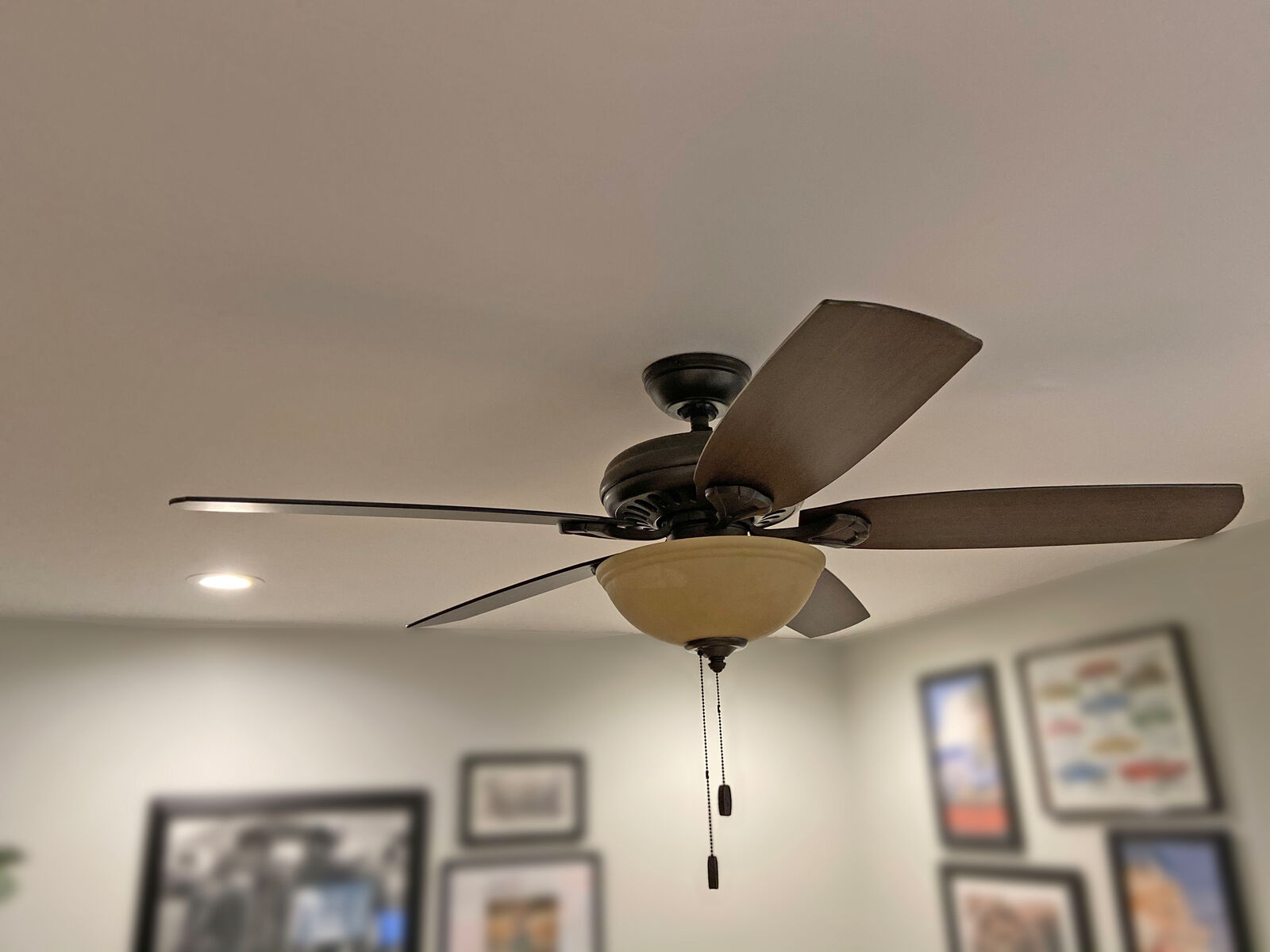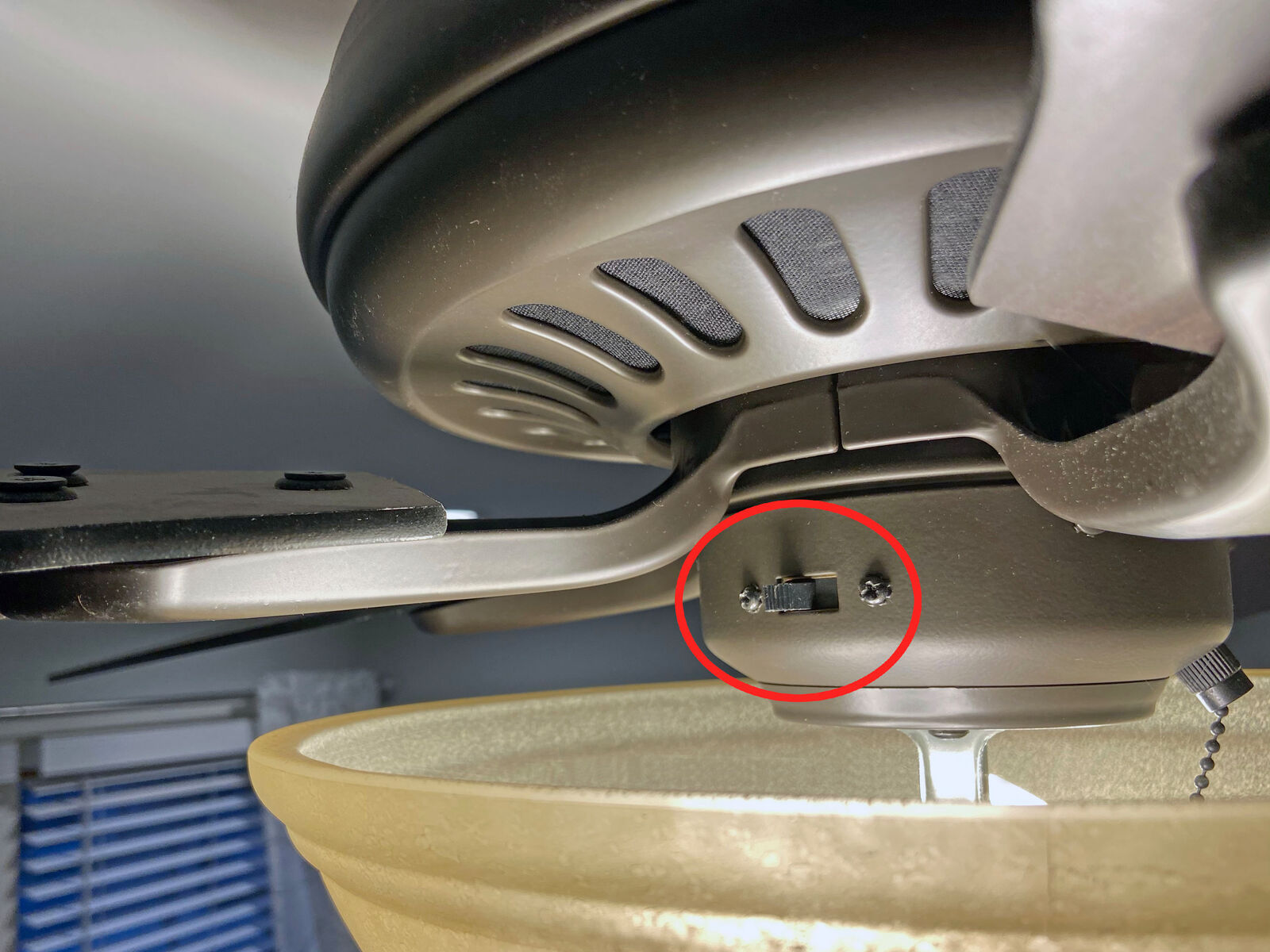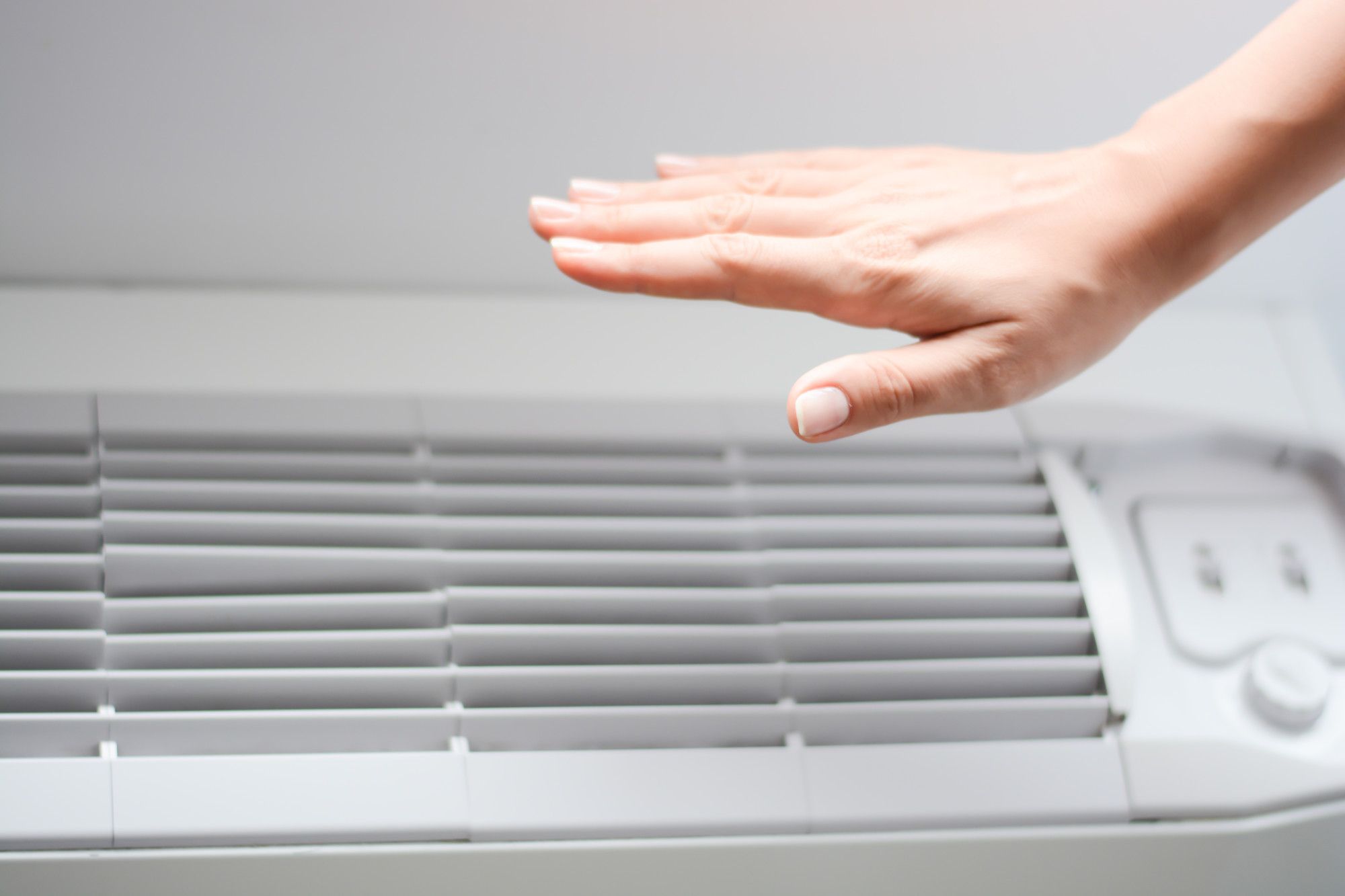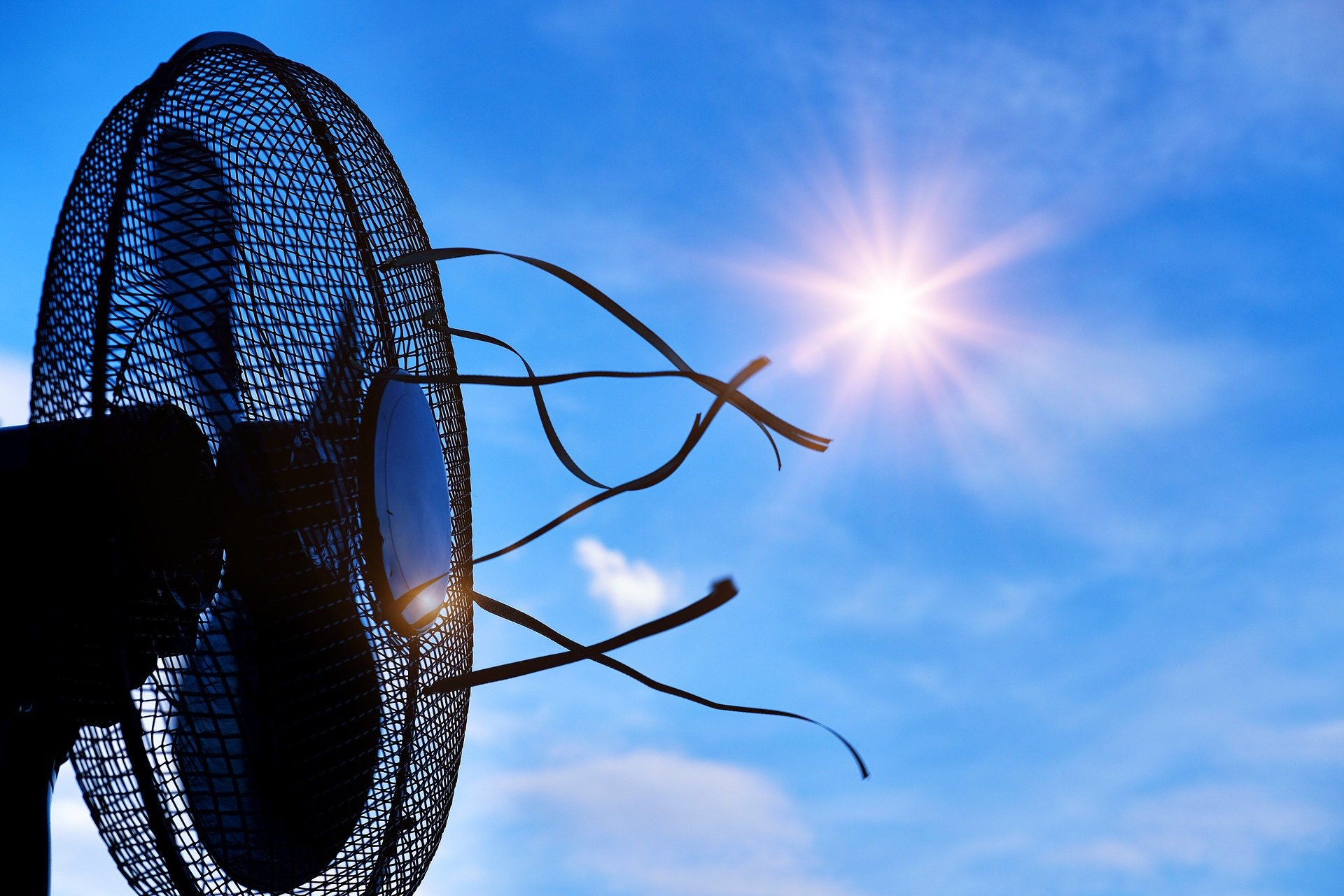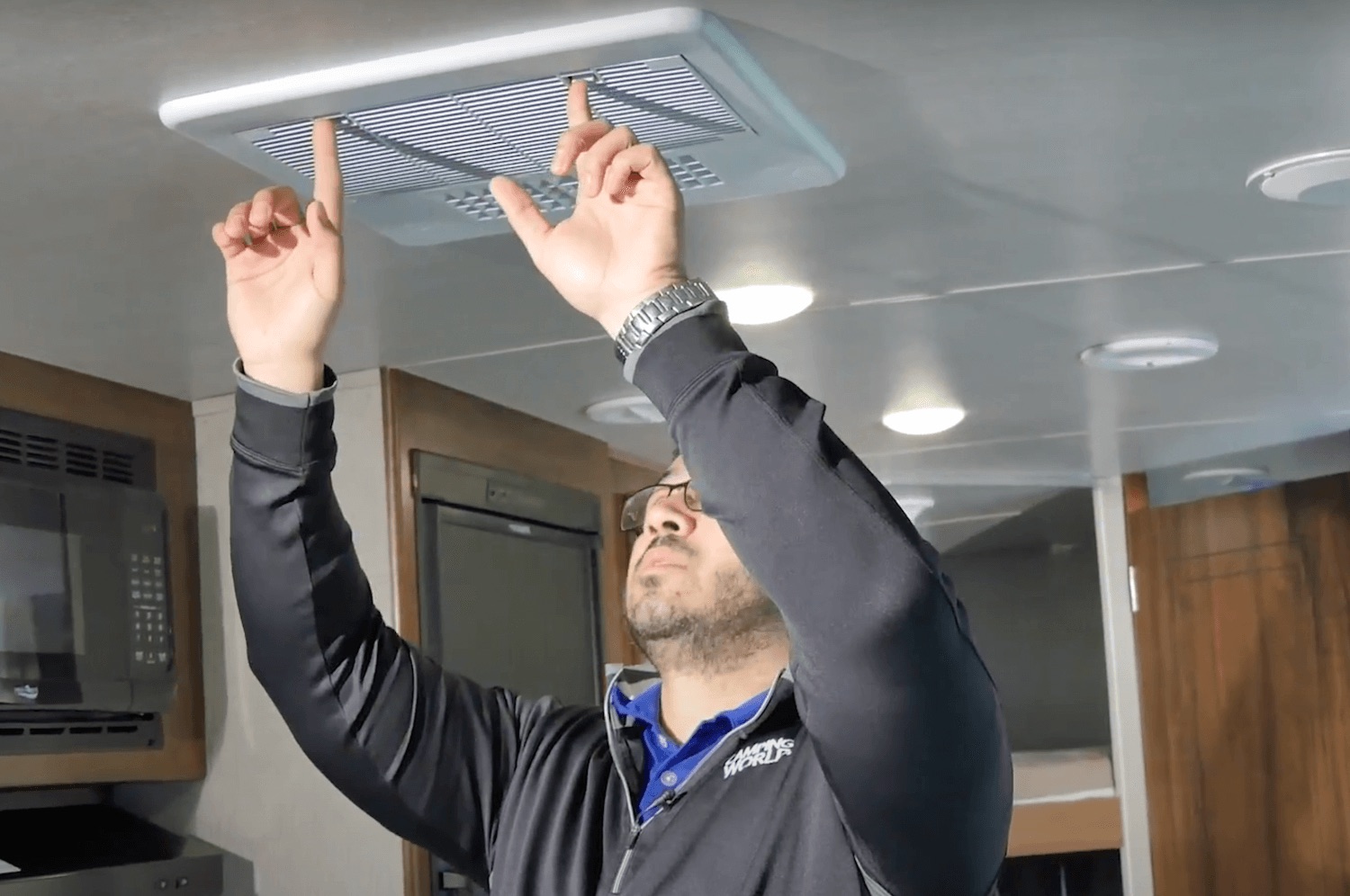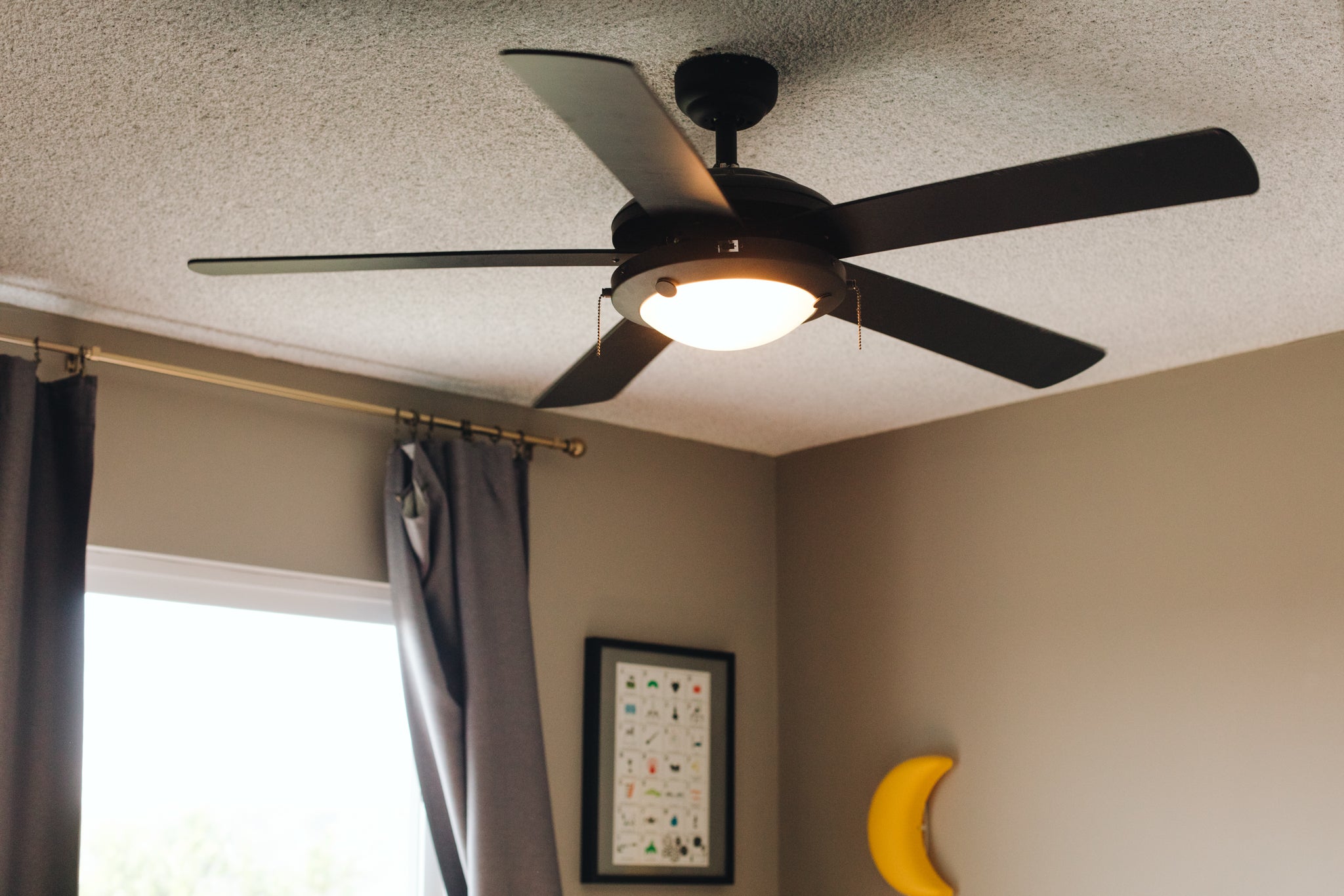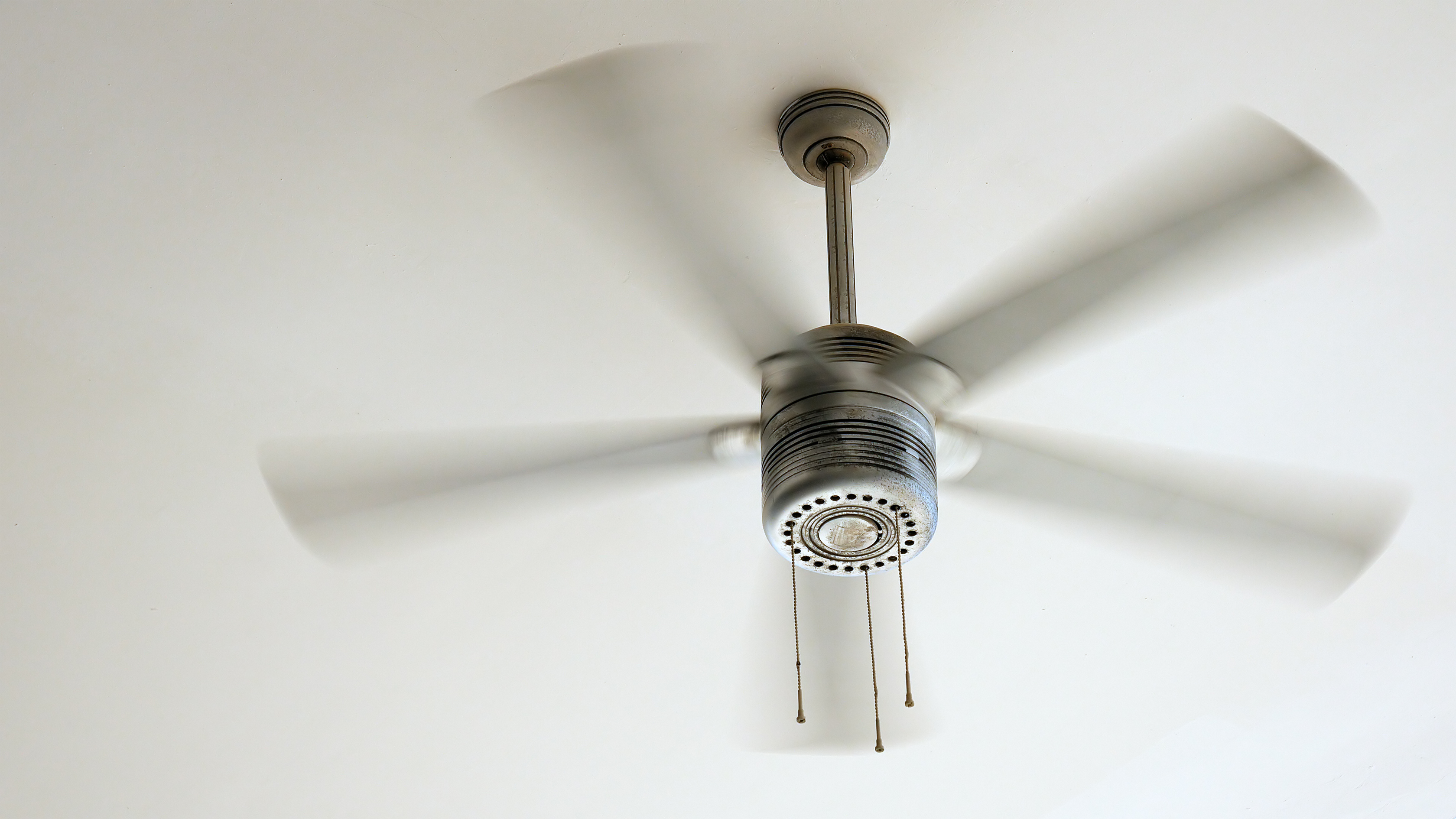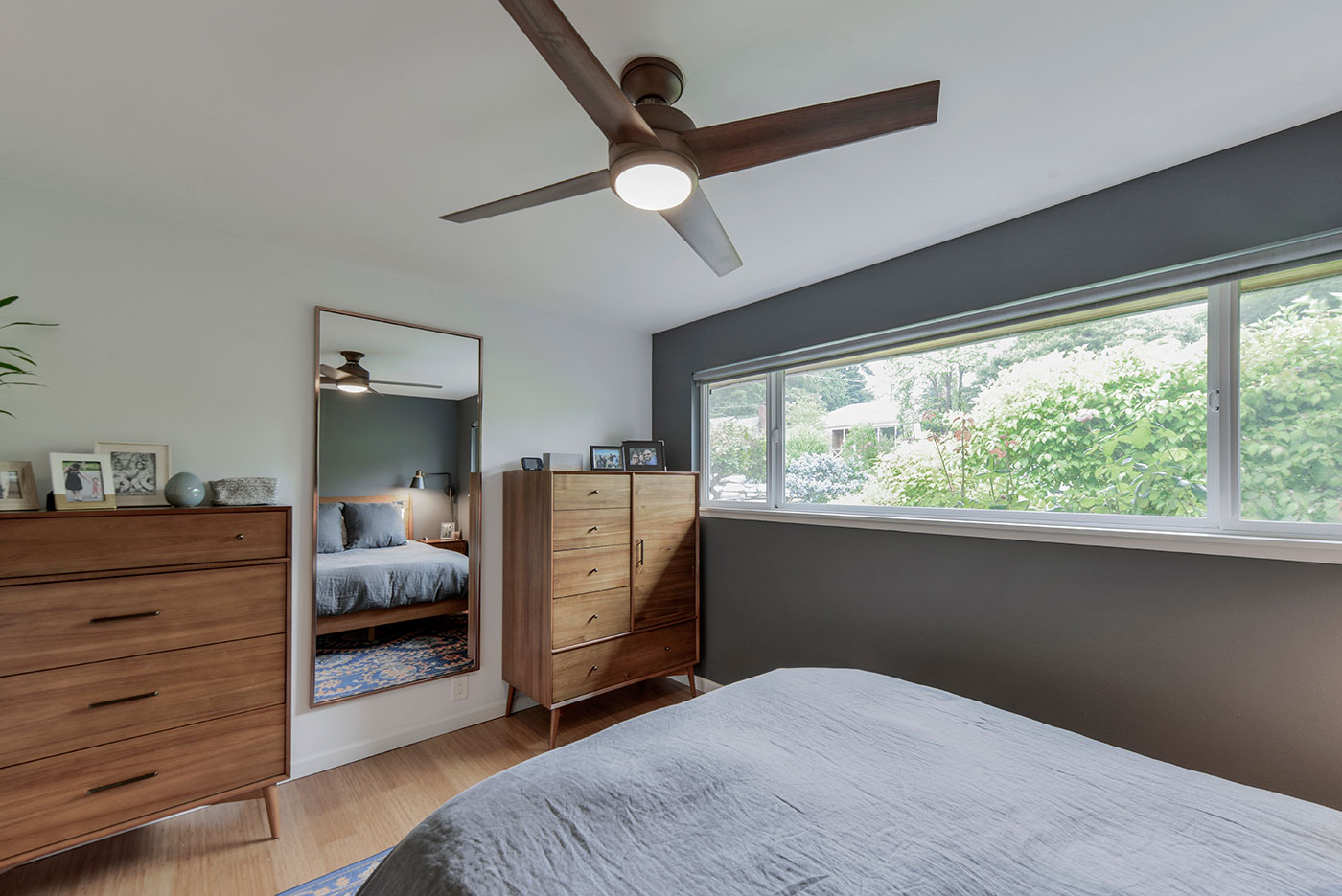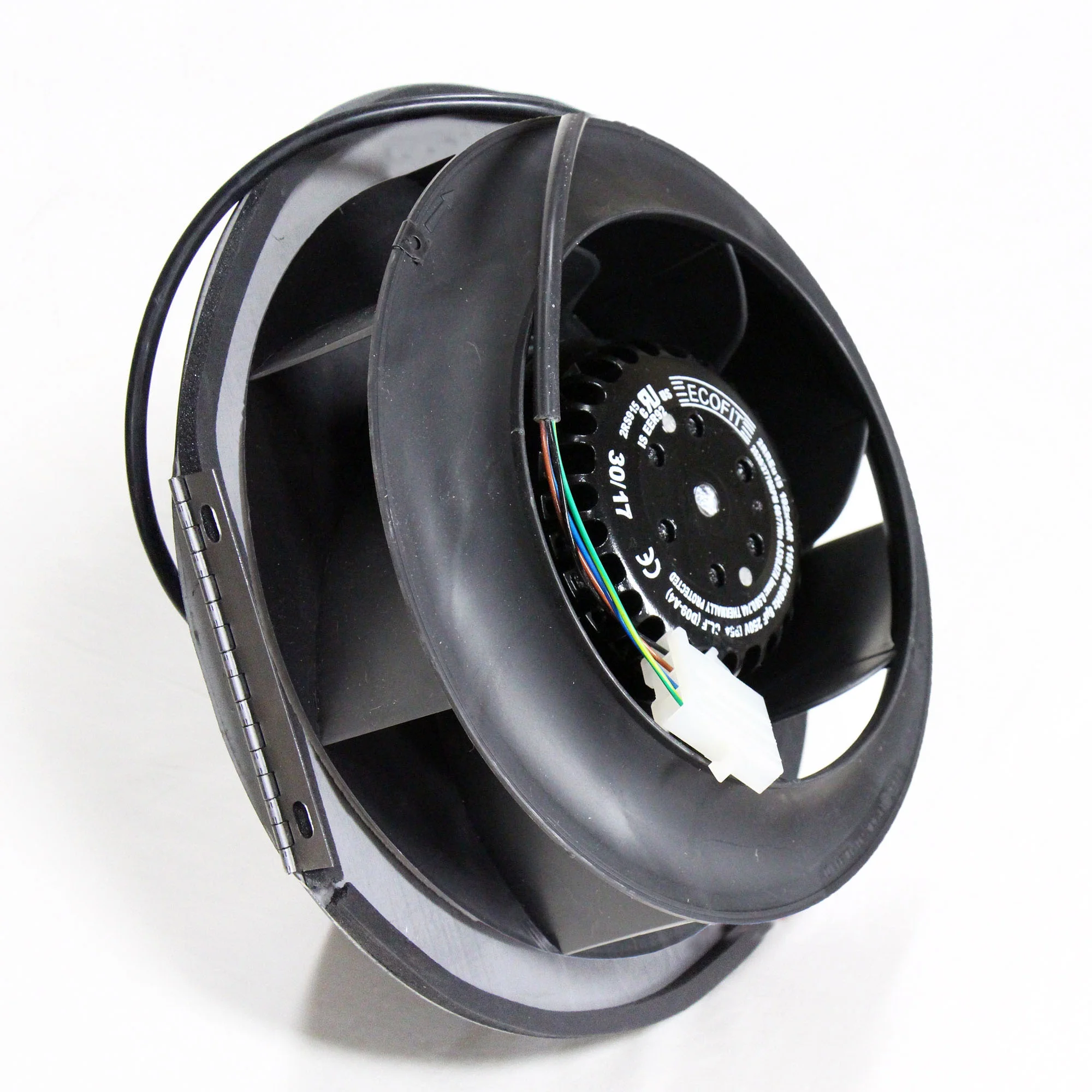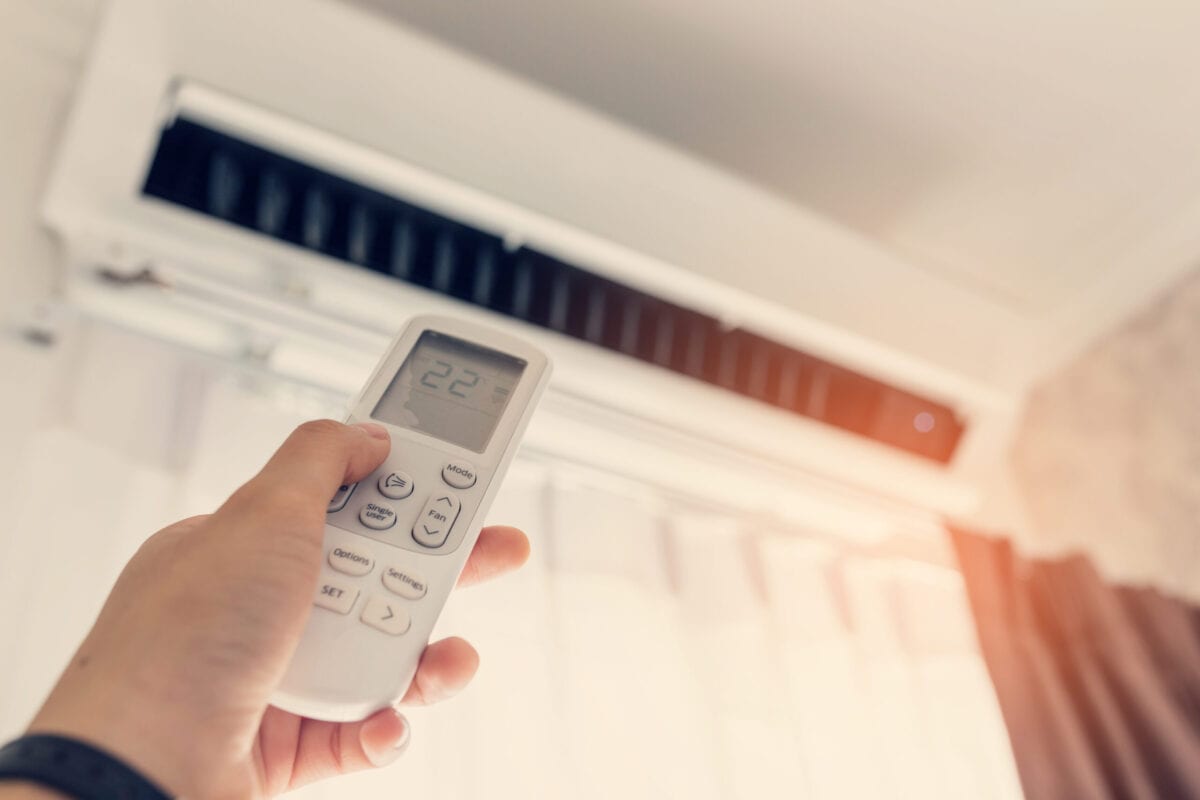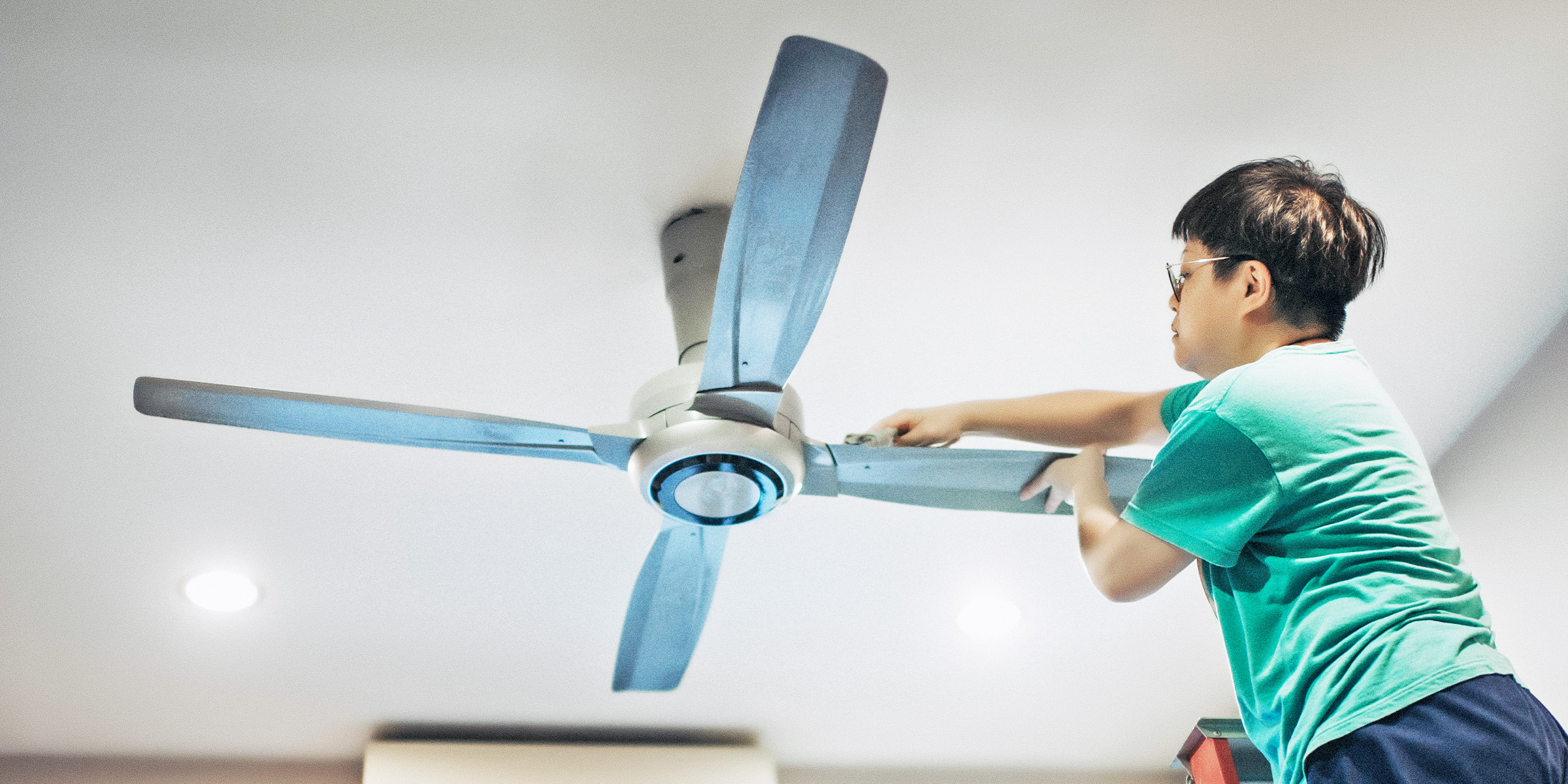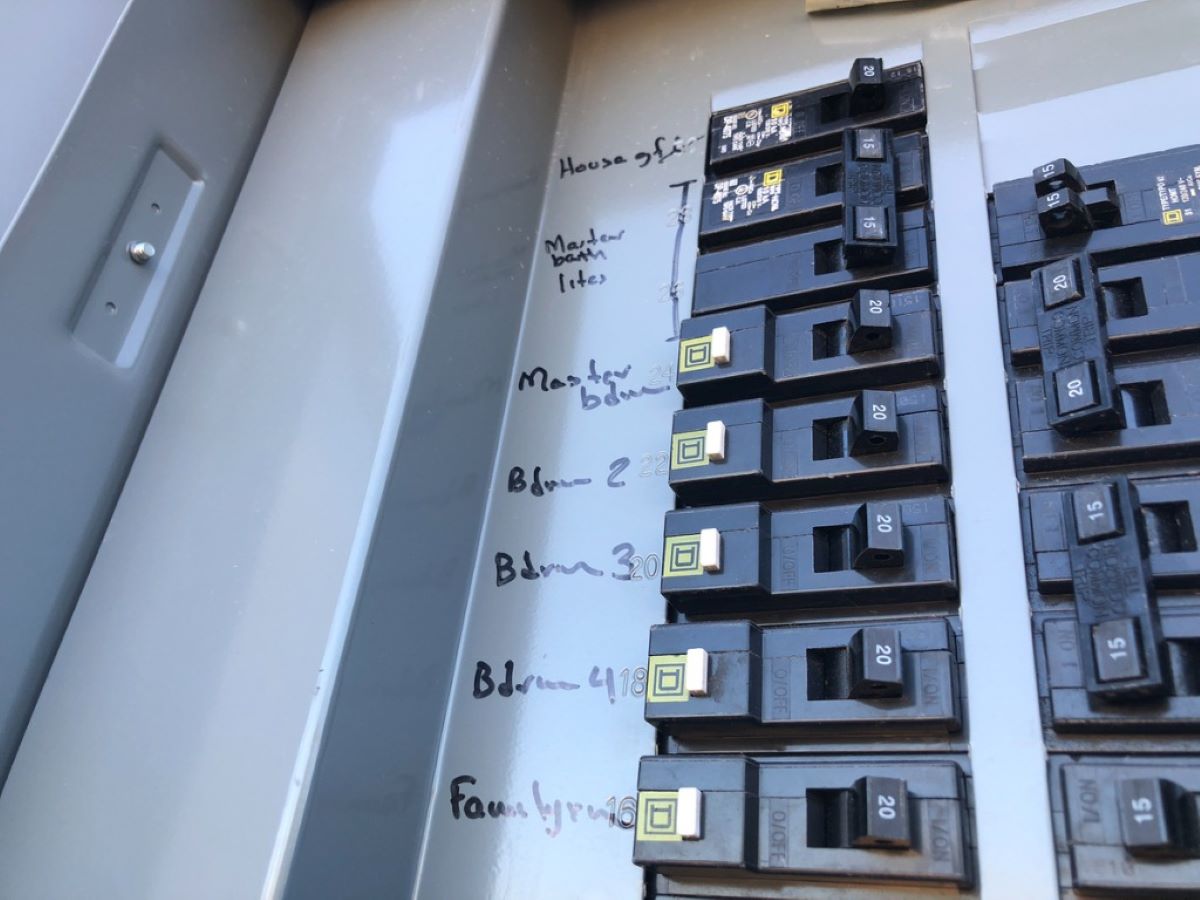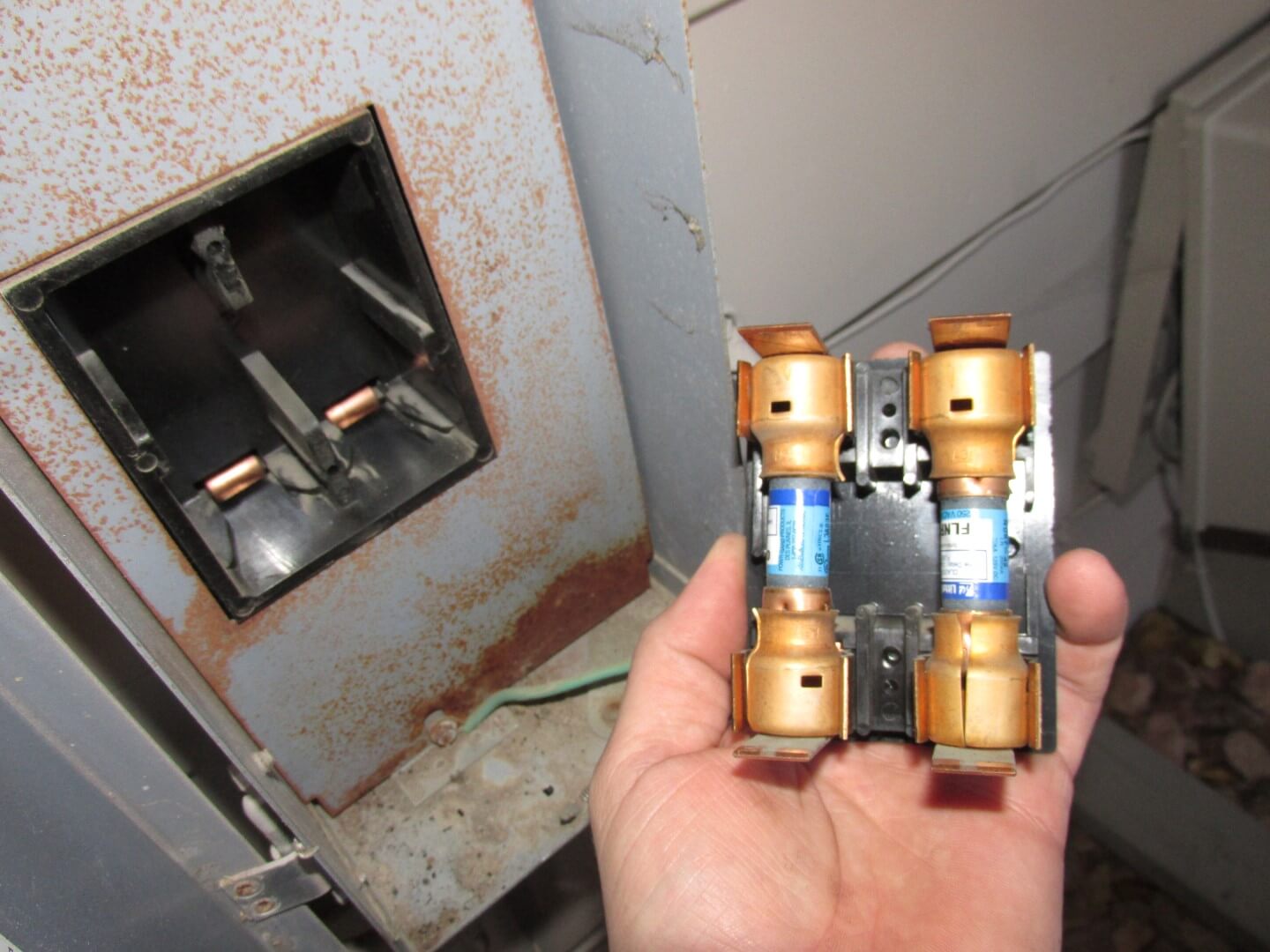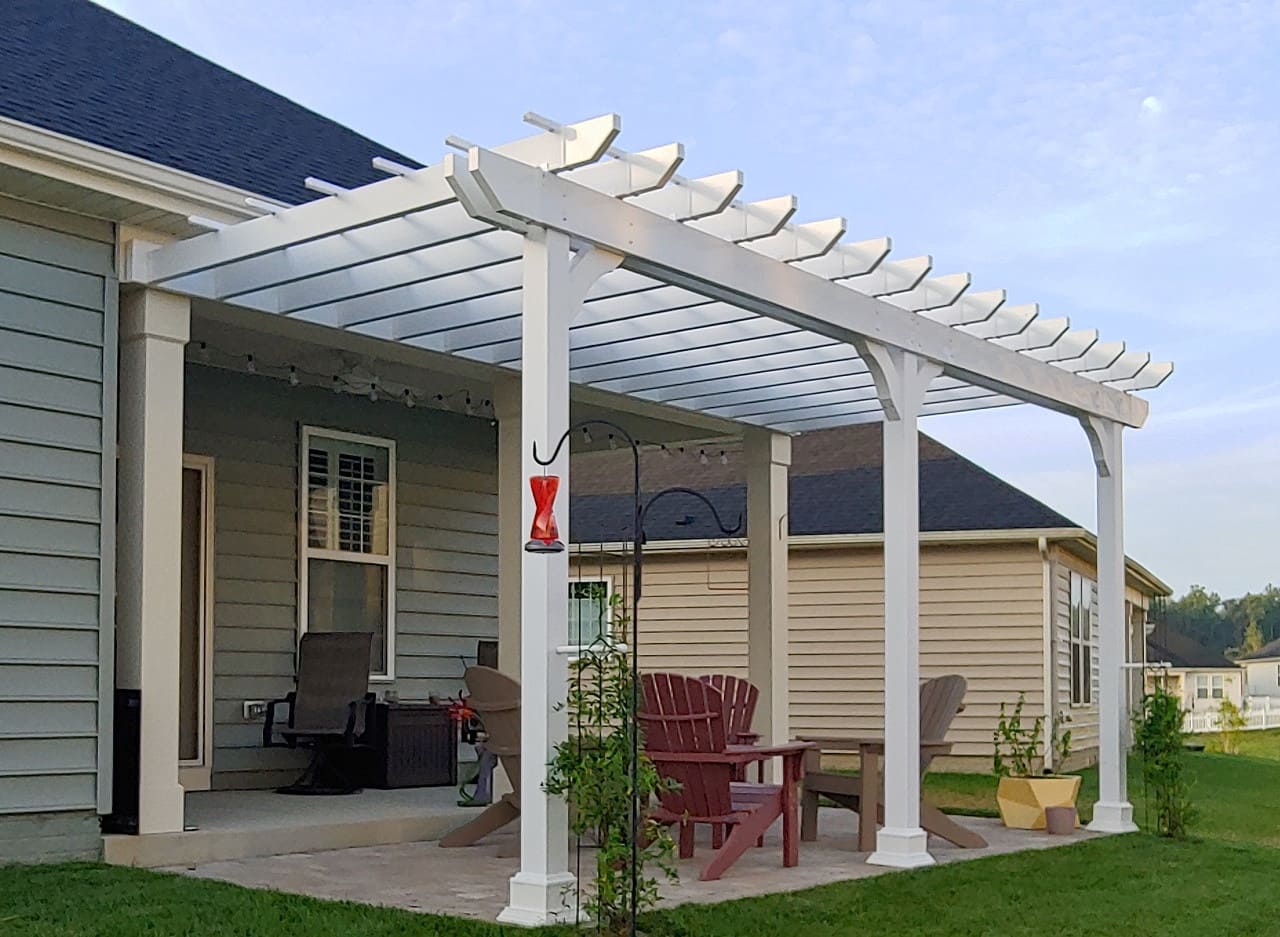Home>Home Maintenance>Which Way Should A Ceiling Fan Turn With Air Conditioning
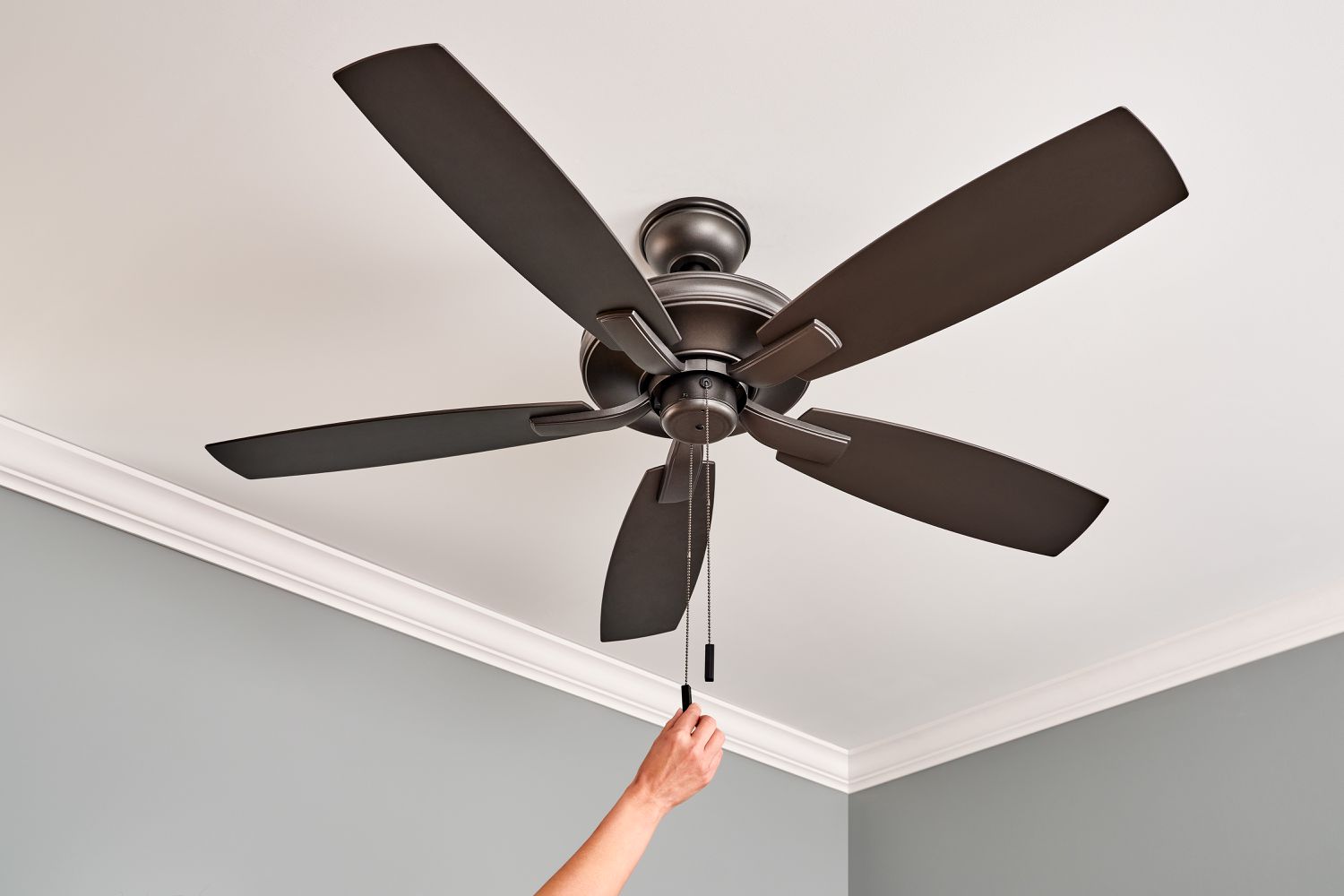

Home Maintenance
Which Way Should A Ceiling Fan Turn With Air Conditioning
Modified: April 23, 2024
Discover the optimal direction for a ceiling fan while running your air conditioning. Keep your home comfortable and save on energy bills with proper home maintenance.
(Many of the links in this article redirect to a specific reviewed product. Your purchase of these products through affiliate links helps to generate commission for Storables.com, at no extra cost. Learn more)
Introduction
A ceiling fan is a popular and practical addition to any home. It not only adds style to a room but also provides comfort by circulating the air and helping to regulate the temperature. When it comes to air conditioning, it’s important to understand how to use a ceiling fan effectively to enhance its cooling capabilities.
One common question that homeowners often ask is, “Which way should a ceiling fan turn with air conditioning?” The direction in which a ceiling fan rotates can greatly impact its efficiency and the overall cooling or heating effect in a room. In this article, we will delve into the purpose of a ceiling fan in air conditioning and discuss how to set the correct ceiling fan direction for optimal comfort and energy savings.
Understanding the purpose of a ceiling fan in air conditioning is crucial to effectively utilizing its features. A ceiling fan does not actually cool the air in a room. Rather, it works by creating a wind chill effect, making you feel cooler. In coordination with air conditioning, a ceiling fan can enhance the cooling effect and make your air conditioner more efficient, allowing you to set the thermostat at a higher temperature and reduce energy consumption.
Now that we understand the purpose of a ceiling fan, let’s dive into how to set the correct ceiling fan direction for air conditioning. Typically, ceiling fans have two direction settings: clockwise and counter-clockwise. Choosing the right direction depends on the season and your desired cooling or heating effect.
In the next sections, we will explore the benefits and usage of both clockwise and counter-clockwise directions, and discuss how to determine the appropriate ceiling fan direction for summer cooling and winter heating.
By following the guidelines in this article, you will be able to optimize your ceiling fan’s performance, increase your comfort level, and potentially save on energy costs. Let’s get started!
Key Takeaways:
- Use your ceiling fan in the summer to feel up to 4 degrees cooler by setting it to rotate in a counter-clockwise direction. This creates a refreshing breeze and helps reduce reliance on air conditioning, saving energy.
- During winter, set your ceiling fan to rotate in a clockwise direction to evenly distribute warm air, potentially reducing the need for higher thermostat settings. This can improve comfort and save on heating costs.
Read more: Which Way Should The Fan Turn In The Winter
Understanding the Purpose of a Ceiling Fan in Air Conditioning
Before diving into the specifics of setting the correct ceiling fan direction, it’s important to understand the purpose and function of a ceiling fan in air conditioning. While an air conditioner is responsible for cooling the air in a room, a ceiling fan works in tandem with the air conditioner to enhance the comfort and efficiency of your cooling system.
A ceiling fan does not actually lower the temperature in a room. Instead, it creates a wind chill effect by moving the air around. This movement creates a breeze that helps evaporate moisture from your skin, making you feel cooler. By utilizing a ceiling fan in conjunction with your air conditioner, you can create a more comfortable indoor environment while potentially reducing your energy consumption.
When a ceiling fan is in operation, it circulates the air in the room, which helps to evenly distribute the cooled or heated air from your air conditioning system. This prevents hot or cold spots and ensures a more consistent and comfortable temperature throughout the space.
Furthermore, a ceiling fan can help reduce the workload on your air conditioner. By using a ceiling fan, you can set your thermostat at a higher temperature in the summer without sacrificing comfort. The breeze from the fan creates a cooling sensation on your skin, allowing you to raise the temperature on your AC unit and save on energy costs.
In the winter months, a ceiling fan can also be useful for heating purposes. Most ceiling fans have a reverse switch, which changes the direction of the blades. By running the fan in reverse, the warm air that rises to the ceiling is pushed back down towards the occupants of the room, providing a more even distribution of heat and potentially reducing the need to crank up the thermostat.
Overall, the purpose of a ceiling fan in air conditioning is to enhance the comfort level in your home and improve the efficiency of your cooling or heating system. Understanding how to properly use a ceiling fan will not only help you achieve a more enjoyable indoor environment but also save on energy costs in the long run.
Setting the Correct Ceiling Fan Direction for Air Conditioning
Now that we understand the purpose of a ceiling fan in air conditioning, let’s delve into how to set the correct ceiling fan direction for optimal comfort and efficiency.
Most ceiling fans have a switch located on the motor housing that allows you to change the direction of the fan’s rotation. The two main directions are clockwise (also known as the winter or reverse direction) and counter-clockwise (also known as the summer or forward direction).
During the summer months, it is recommended to set your ceiling fan to rotate in the counter-clockwise direction. When the fan spins in this direction, it creates a downward airflow that produces a cooling breeze. This breeze helps evaporate perspiration on your skin, making you feel cooler without actually lowering the room temperature. By using a ceiling fan to supplement your air conditioning system, you can raise the thermostat by a few degrees, reducing energy consumption and potentially saving on cooling costs.
In contrast, during the winter months, it is advised to set your ceiling fan to rotate in the clockwise direction. This motion pulls the air from below and pushes it upwards towards the ceiling. As a result, the warm air that naturally rises is pushed back down, evenly distributing the heat throughout the room. By using a ceiling fan in this manner, you can improve the efficiency of your heating system and reduce the reliance on higher thermostat settings.
When setting the direction of your ceiling fan, remember to adjust the speed settings accordingly. In the summer, a higher fan speed will create a more intense cooling breeze, while a lower speed may be sufficient during milder weather. In the winter, a low fan speed is recommended to gently recirculate the warm air without creating a noticeable draft.
It’s important to note that the direction switch on ceiling fans may be located in different positions depending on the model. Consult the fan’s instruction manual or the manufacturer’s website to locate the switch and understand the specific directions for your particular model.
By correctly setting the direction of your ceiling fan depending on the season, you can optimize its cooling or heating capabilities and enhance your overall comfort while effectively utilizing your air conditioning system.
Clockwise Direction: Benefits and Usage
When it comes to using your ceiling fan during the winter months, setting it to rotate in a clockwise direction is the key. This direction, also known as the winter or reverse direction, offers several benefits and serves specific purposes in enhancing the comfort and efficiency of your heating system.
One of the main benefits of the clockwise direction is its ability to redistribute warm air throughout the room. As warm air naturally rises towards the ceiling, a ceiling fan running in the clockwise direction helps push this air back down towards the floor. This creates a more even distribution of heat and prevents the warm air from getting trapped near the ceiling. By circulating the warm air, you can achieve a more comfortable environment and potentially reduce your reliance on high thermostat settings.
Another advantage of the clockwise direction is its ability to reduce energy consumption. By utilizing your ceiling fan to circulate the warm air, you can set your thermostat lower while still enjoying the same level of comfort. This can result in energy savings and lower heating costs during the winter months.
In terms of usage, it’s important to note that not all ceiling fans have a dedicated switch to change the direction. Some fans may require you to reverse the direction manually by flipping the switch on the motor. Others may use a remote control or have a wall-mounted control panel to change the direction effortlessly.
When setting your ceiling fan to rotate in the clockwise direction, be mindful of the fan speed. During the winter, it’s generally recommended to choose a low fan speed to avoid creating a noticeable draft. A gentle circulation of warm air is sufficient to improve the comfort level in the room without causing any discomfort.
Overall, using the clockwise direction on your ceiling fan during the winter months can help maximize the efficiency of your heating system. It redistributes warm air, improves comfort, and potentially reduces energy consumption. By taking advantage of this feature, you can create a cozy and inviting atmosphere while saving on heating costs.
During the summer with air conditioning, set your ceiling fan to spin counterclockwise to create a cool breeze. This will help distribute the cool air and make the room feel more comfortable.
Counter-Clockwise Direction: Benefits and Usage
When it comes to utilizing your ceiling fan during the summer months, setting it to rotate in a counter-clockwise direction is the way to go. This direction, also known as the summer or forward direction, offers several benefits and serves specific purposes in enhancing the cooling effect of your air conditioning system.
One of the main benefits of the counter-clockwise direction is its ability to create a cooling breeze. As the ceiling fan rotates in this direction, it pushes the air downwards, creating a breeze that evaporates perspiration on your skin and provides a cooling sensation. This breeze can make you feel up to 4 degrees Fahrenheit cooler, allowing you to set your air conditioner at a higher temperature and potentially reduce your energy consumption.
Another advantage of the counter-clockwise direction is its ability to improve air circulation. As the fan pushes the air downwards, it helps to disburse the cool air from your air conditioning system throughout the room more effectively. This prevents hot spots and ensures a more even distribution of cool air in the space, leaving you feeling comfortable throughout.
In terms of usage, most ceiling fans have a dedicated switch or remote control option to change the direction to counter-clockwise for the summer months. It’s important to locate this switch on the fan and ensure it is set correctly to achieve the desired cooling effect.
When setting your ceiling fan to rotate in the counter-clockwise direction, you can experiment with different fan speeds to find the ideal comfort level. A higher fan speed will create a more intense cooling breeze, which can be beneficial during extremely hot days. However, if the airflow feels too strong or creates a draft, you can opt for a lower fan speed that still provides a comfortable level of cooling without causing discomfort.
It’s important to note that a ceiling fan alone does not lower the temperature in a room. Instead, it enhances the cooling effect by creating a breeze that helps evaporate perspiration and makes you feel cooler. For optimal comfort and energy savings, it’s recommended to use the ceiling fan in conjunction with your air conditioning system, allowing you to raise the thermostat a few degrees and potentially reduce energy consumption.
Overall, using the counter-clockwise direction on your ceiling fan during the summer months can significantly enhance the cooling effect in your home. It creates a refreshing breeze, improves air circulation, and can potentially reduce your reliance on air conditioning, leading to energy savings. By taking advantage of this feature, you can stay cool and comfortable while optimizing energy efficiency.
Read more: What Way Should Ceiling Fan Turn In Summer
Determining the Right Ceiling Fan Direction for Summer Cooling
When the summer heat kicks in, it’s crucial to set your ceiling fan in the correct direction to maximize its cooling capabilities. By determining the right ceiling fan direction for summer cooling, you can create a comfortable and refreshing environment while potentially reducing your reliance on air conditioning.
The ideal direction for your ceiling fan during the summer months is counter-clockwise or the forward direction. This direction creates a downward airflow that produces a cooling breeze. As the fan spins in this direction, it pushes the air downwards, creating air movement that helps evaporate perspiration on your skin, giving you a cooling sensation. This breeze can make you feel up to 4 degrees Fahrenheit cooler without actually lowering the room temperature.
When setting your ceiling fan to rotate in the counter-clockwise direction, it’s essential to consider the fan speed. A higher fan speed will generate a more intense cooling breeze, which is ideal for hot summer days. However, if the airflow feels too strong or creates a draft, you can opt for a lower fan speed that still provides a comfortable level of cooling without causing discomfort.
Additionally, it’s important to note that while the ceiling fan creates a cooling effect, it doesn’t actually cool the air in the room. Instead, it works in conjunction with your air conditioning system by enhancing the circulation of cool air. By using the ceiling fan along with your air conditioner, you can raise the thermostat a few degrees and potentially reduce energy consumption while still maintaining a comfortable indoor environment.
To determine the right ceiling fan direction for summer cooling, check the fan’s switch or remote control options. Most ceiling fans have a dedicated switch located on the motor housing that allows you to change the direction. Ensure that the switch is set to the counter-clockwise direction to optimize your fan’s cooling capabilities.
By setting the correct ceiling fan direction for summer cooling, you can create a refreshing breeze, improve air circulation, and potentially reduce your reliance on air conditioning. This not only enhances your comfort but also helps save on energy costs. So, next time the summer heat arrives, remember to set your ceiling fan to the counter-clockwise direction and enjoy the cooling benefits it provides.
Determining the Right Ceiling Fan Direction for Winter Heating
When the colder months arrive, it’s important to know how to set the right ceiling fan direction to maximize its heating capabilities. By determining the correct ceiling fan direction for winter heating, you can effectively distribute warm air throughout the room and potentially reduce your reliance on higher thermostat settings.
During the winter, the ideal direction for your ceiling fan is clockwise or the reverse direction. This direction helps to redistribute warm air that naturally rises to the ceiling. As the fan rotates in the clockwise direction, it draws the cool air from below and pushes the warm air downwards towards the occupants of the room. This gentle circulation of warm air ensures that the heat is evenly distributed, preventing any hot or cold spots in the space.
By running your ceiling fan in the clockwise direction, you can make your heating system more efficient. Rather than the warm air staying trapped near the ceiling, the fan helps to push it back down towards the living area. This means that you can potentially lower your thermostat setting and still feel just as warm and comfortable.
When setting your ceiling fan to rotate in the clockwise direction for winter heating, keep in mind that the fan speed should be set to a low or medium setting. This ensures a gentle circulation of warm air without creating a noticeable draft. The goal is to recirculate the warm air, not create a constant breeze in the room.
To determine the right ceiling fan direction for winter heating, locate the switch or remote control options on your fan. Most ceiling fans have a dedicated switch on the motor housing that allows you to change the direction. Ensure that the switch is set to the clockwise direction before operating the fan during the colder months.
It’s important to note that not all ceiling fans have a reverse function or a dedicated switch to change the direction. If your fan doesn’t have this feature, you may need to manually adjust the direction by flipping the switch on the motor housing.
By determining the correct ceiling fan direction for winter heating, you can optimize the efficiency of your heating system. The gentle circulation of warm air provided by the ceiling fan ensures a more even distribution of heat, making your living space more comfortable and potentially reducing your heating costs. So, make sure to set your ceiling fan to rotate in the clockwise direction when the winter chill sets in.
Conclusion
Understanding the proper direction to set your ceiling fan is essential for maximizing its effectiveness in air conditioning and heating. By utilizing the correct direction, you can enhance the comfort level in your home, improve air circulation, and potentially reduce your energy consumption.
During the summer months, setting your ceiling fan to rotate in a counter-clockwise direction creates a cooling breeze by pushing the air downwards. This breeze helps to evaporate perspiration on your skin and provides a refreshing sensation. By using the ceiling fan along with your air conditioning system, you can raise the thermostat a few degrees and reduce energy consumption while maintaining a comfortable indoor environment.
In contrast, during the winter months, setting your ceiling fan to rotate in a clockwise direction helps redistribute warm air that rises towards the ceiling. This gentle circulation of warm air ensures a more even distribution of heat throughout the room, potentially allowing you to lower your thermostat setting and still feel warm and cozy.
Remember to adjust the fan speed accordingly to create the desired level of comfort and avoid drafts or excessive airflow. Take advantage of the switch or remote control options on your ceiling fan to easily change the direction based on the season.
By properly setting the direction of your ceiling fan for air conditioning and heating, you can optimize its performance and enhance your overall comfort while potentially saving on energy costs. However, it’s important to note that ceiling fans are not a substitute for an air conditioner or heater. They work in conjunction with these systems to enhance their effectiveness and create a more comfortable living environment.
Now that you have a comprehensive understanding of how to set the correct ceiling fan direction, you can confidently enjoy the benefits it provides. Whether you’re seeking relief from the summer heat or looking to improve the efficiency of your heating system, a properly set ceiling fan can make a noticeable difference in your home’s comfort level. So, take advantage of your ceiling fan and optimize its functionality to create a comfortable and inviting space all year round.
Frequently Asked Questions about Which Way Should A Ceiling Fan Turn With Air Conditioning
Was this page helpful?
At Storables.com, we guarantee accurate and reliable information. Our content, validated by Expert Board Contributors, is crafted following stringent Editorial Policies. We're committed to providing you with well-researched, expert-backed insights for all your informational needs.
